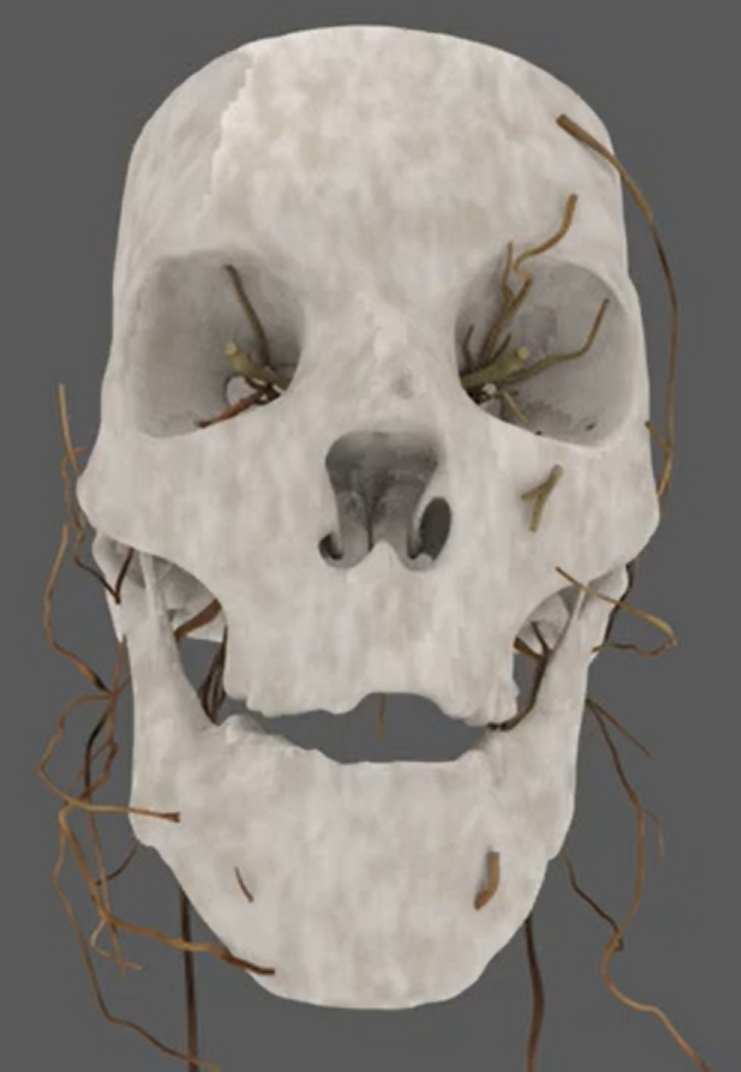The latest advancements in medical imaging technology have accelerated the acquisition of high-resolution, 3D anatomical data. Tools such as 3D printers, surface scanners, and virtual/augmented reality headsets have propelled the creation and use of 3D graphics in the research and education of the anatomical sciences. These developments have created a demand for individuals with strong spatial skills, proficient in both human anatomy and in 3D technology. The Anatomical Imaging and Modeling (AIM) track aims to weave traditional teachings in anatomical sciences with cutting-edge, 3D technology through AIM specific coursework, mentorship, project-based learning, and teaching opportunities.
Animation by 2nd Year Student, Kate Gustilo
Outlook
The AIM Track provides specialized training that highlights advanced technological qualifications, to better position students for job placement in careers that combine anatomical sciences and advanced 3D computer graphics.
Anatomical Imaging and Modeling (AIM) Track Course Requirements
ANAT 6208, Foundations in 3D Modeling for Anatomical Sciences (1 credit)
This course is an introduction to the applications and techniques necessary for 3D scanning, modeling, and printing. This lab-based course will provide students with hands-on experience on acquiring and processing surface scan data along with strategies for printing and finishing objects using fused-deposition modeling and stereolithography.
ANAT 6210, Autodesk Maya for Anatomical Sciences (2 credits)
This course teaches students to create professional animations illustrating concepts inherent in the study of medical science using Autodesk Maya. The instruction c overs techniques such as hard surface modeling, rigging, texturing, particle effects, and animation.
ANAT 6220, Unreal Engine for Anatomical Sciences (2 credits)
This course builds upon the foundational 3D modeling skills learned in ANAT 6260 and provides students with the practical experience, inspiration, and confidence to incorporate the Unreal Engine into their Capstone Projects. Students will deploy an app built with Unreal Engine.
AIM Electives (4 credits)
AIM Track students have access to a broad range of electives on the CU-Anschutz and CU-Denver campuses. Electives provide additional opportunities for skill and portfolio development.
AIM Track Electives .
How many additional credits are needed for the AIM Track?
No additional credits are required to earn the Track in Anatomical Imaging and Modeling, as the coursework is embedded in the Modern Human Anatomy curriculum and degree requirements. Students who pursue the AIM Track are able to gradate on the same timeline as non-AIM students.
Which Students are eligible to be in the AIM Track?
To join the AIM Track, you must be a degree-seeking student in the M.S. in Modern Human Anatomy (MHA) Program. Interested MHA students will attend an AIM information session during the 1st year spring semester and apply to join the Track.
What are the hardware requirements?
Students enrolled in the AIM Track will need a reasonably powerful laptop with the following specifications:
CPU: Intel i9 RAM: 32 GB GPU: GPU with 6+ GB RAM
What technology skills are needed to join the AIM Track?
ANAT 6205, Imaging and Modeling (4 credits) is a prerequisite to the AIM core courses. Students will gain all other technical skills through coursework, projects, training, and mentoring in the AIM Track.

